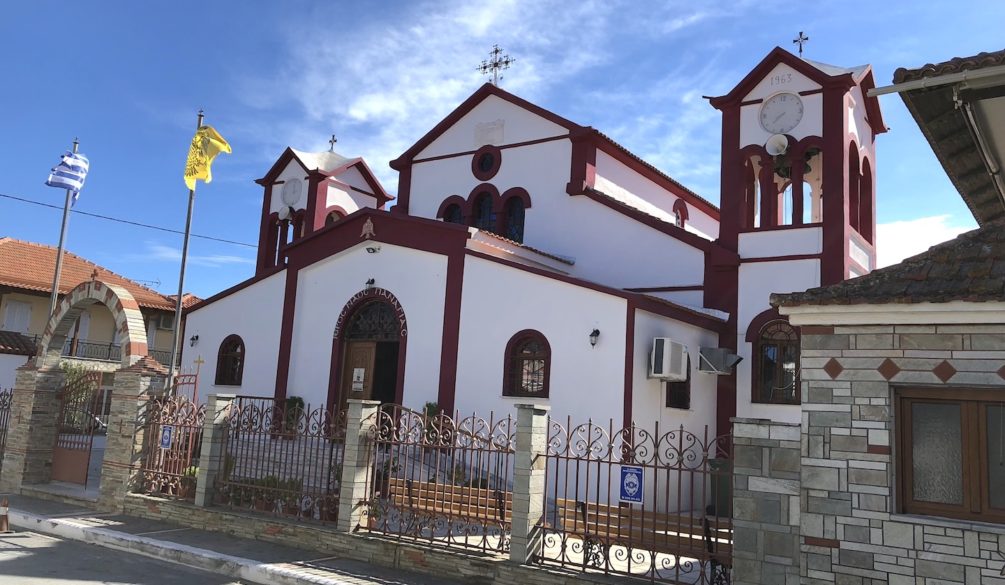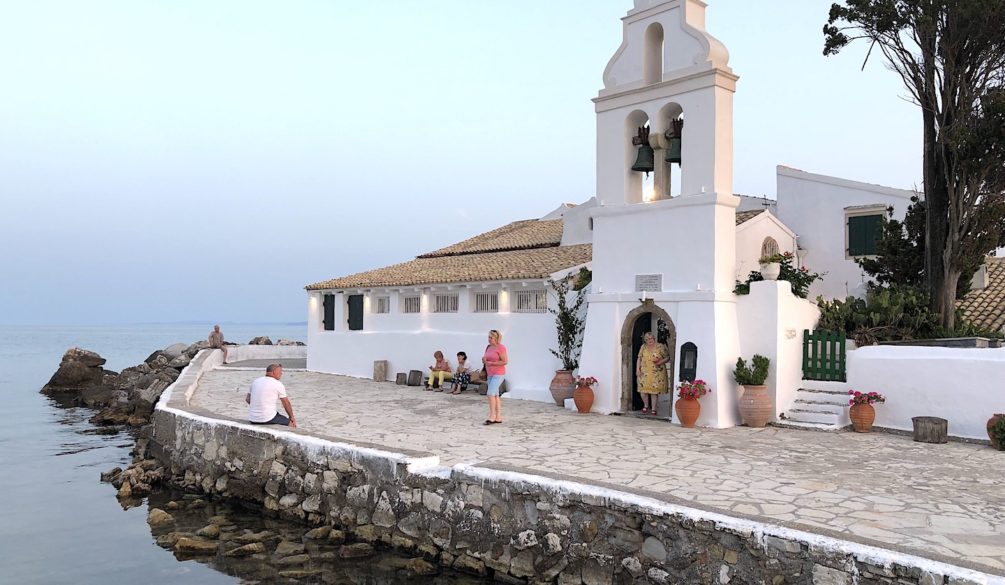2021
Greece September 2018
Roads and cities where the Holy Apostles Paul and St. Andrew preached The First-Called.
Places where the saints asceticized, and monasteries erected there, spiritual pharos. Myrrh-streaming, miraculous icons that came to us from the first centuries of Christianity. The relics of the saints, where every day the Lord glorifies his saints of God through miracles. Holy Mount Athos, Patras – the city of the holy martyrdom of the Holy Apostle Andrew the First-Called, here in the magnificent cathedral are kept the cross on which the holy apostle and His holy head were crucified. Monasteries of Kalavrita – here is the miraculous icon of the Most Holy The Virgin made by the Evangelist Luke himself. The island of Aegina is like a lighthouse of Orthodoxy, the monastery of St. Nicholas. The Trinity Cathedral was founded by Saint Nectarius of Aegina, a modern light of Orthodoxy. Meteora-8 wonder of the world, “floating monasteries”, since the 10th century hermit monks built monasteries,which still touch and surprise the Orthodox believer.
The heritage of the Greek land and its Orthodox history is so rich that it is impossible to describe or embrace the whole mass of holy places of grace at one time.
2021
Greece Corfu Island July 2019
The church of St. Spyridon of Trimifunt on the island of Corfu, in the city of Kerkyra.
The capital of the island of Kerkyra is considered one of the most beautiful cities in Greece. Today, Kerkyra is the spiritual, cultural, and economic center of not only the island of the same name, but also of all the Ionian Islands. The city is unique in its diversity, it has retained the stamp of various cultures: ancient Greek, Ancient Roman, Byzantine; here, various architectural styles are intricately and harmoniously intertwined: Venetian, French, English, but at all times it remained Greek in spirit.
The current church of St. Spyridon is located in the midst of the picturesque narrow,” two donkeys”, in the words of Gerald Durrell, the streets of the old town. The architecture of the building is typical of the temples of the Ionian Islands. A high snow-white bell tower with a red dome and a clock rises above two or three-story buildings. It is a great landmark for visiting pilgrims. The church of St. Spyridon was considered the richest in the East, donations to the church were made not only by Orthodox, but also by Catholic Christians. Numerous contributions were made by the Russian Empress Catherine II and her son Emperor Paul I.
The mural painting differs from the painting in Greek temples and rather resembles Italian frescoes. Undoubtedly, the influence of Venice is felt. Huge gold and silver panicadils, a marble iconostasis, unusual-looking icons-medallions in gold frames on the vault. They represent scenes from the life of the Saint, the Evangelists, and other similar themes and images. The ceiling of the temple was made by Panagiotis Doxaras (1662-1729), one of the founders The Ionian School of Art, which was influenced by the Renaissance. The artist studied in Rome and Venice and was a great admirer of Tintoretto, Titian, and Veronese. In 1750-1755, a number of works were performed by Spiridon Sperantsas. The original icons and other church paintings by Doxaras were destroyed by the dampness, and their place was taken by copies made by Nikolaos Postpotis in 1851-1852.
The silver sarcophagus of St. Spyridon, made in 1867 by special order in Vienna, is located in a small chapel to the right of the altar. There are a lot of churches on the island, which emphasizes the sincere deep religiosity of its inhabitants, but they have special feelings for St. Spyridon, who is considered the main patron of the island, and his relics are the most valuable treasure. It is enough to stay in the church where the holy relics rest for a few hours to understand how much the Saint is revered here. It seems that the temple is the center of attraction for all the inhabitants of the island. Throughout the day, it is never empty for a minute. And it’s not just about the many pilgrims. The locals come here with their joys and sorrows, asking for help and thanking the Saint for his mercy. The temple has two side doors opening onto parallel streets, and, hurrying about their business, the townspeople, passing through the temple, hurry to witness their love for him. For many of them, the morning begins with the fact that they go to venerate the relics, put a candle, ask for blessings for the upcoming day. After the Liturgy, a moleben is served in the church, and the shrine with the relics of the Saint is opened (sometimes it is opened at five o’clock in the evening). There is a huge queue of those who want to venerate the whole-bearing relics. Two priests are constantly reading notes. The number of children and young people in the temple is amazing. Children from an early age know how to behave in a holy place, where to put a candle, how to cross themselves. Old men and women who are in no hurry to go anywhere sit in the temple for hours in awe, watching what is happening. Candles are also sold here at the entrances to the temple. In addition to the usual candles, you can buy huge, almost the height of a person. They are placed on special candlesticks on the street in front of the entrance.
For centuries, the faith of the inhabitants of the island in their Saint has not weakened — there is no family here that could not tell the story of how Saint Spyridon helped them or their loved ones. When they say “Saint”, everyone understands that they are talking about Saint Spyridon. Many Greeks call it the name of their children, in Kerkyra Spiro (Spyridon) is the most common male name. This is a tribute to the local residents to the most revered Saint here, but St. Spyridon helps not only “his own”, he helps all who need his heavenly protection, all who turn to him with faith, for them all, he stands at the Throne of God. Thousands of believers from all over the world come to venerate the relics of the Saint.
Despite the fact that all the miracles of St. Spyridon are officially recognized by the church and are documented in the chronicles of the island of Cyprus, it is very difficult for a modern person to believe in them. The body of Saint Spyridon has a constant temperature: 36.6 degrees. He grows hair and nails. These amazing relics-they weigh as much as the body of an adult man and miraculously do not lose the properties of living flesh, have the temperature of the human body and retain softness. There is no other explanation than a miracle. Scientists from all over the world tried to study the phenomenon of the incorruptible relics of Saint Spyridon, and the church did not prevent them. However, biophysicists and biochemists, having studied the relics of the saint, only spread their hands. There is no other explanation, other than a miracle, for what any Orthodox visitor to the church in Corfu can see. It is also a miracle that the patron saint of the wanderers, st. Spiridon himself to this day does not cease to “wander”, helping everyone who turns to him with faith in prayer.
Services every day. The Liturgy begins on weekdays at about 8.30, on Sunday-closer to 9.00. Before it, the Hours and Matins. In the evening, the service is at 19.00. The relics are opened immediately after the Liturgy closer at 10.00 and in the evening in the interval from 17.30 to 18.30. During the day – as groups of pilgrims arrive.








